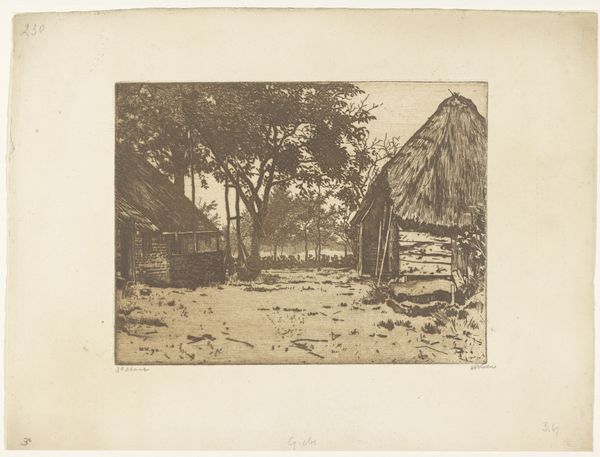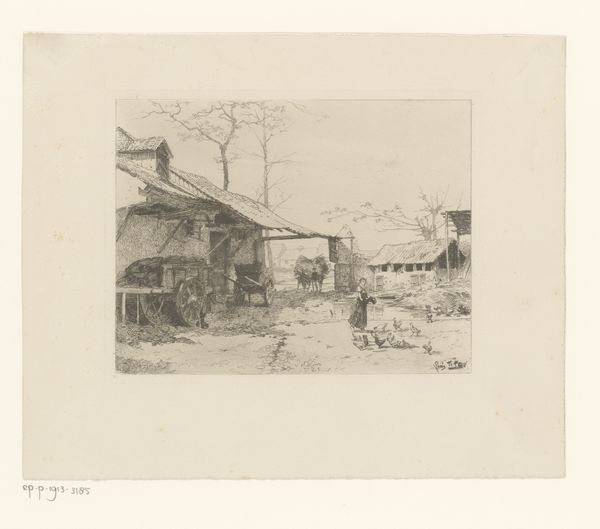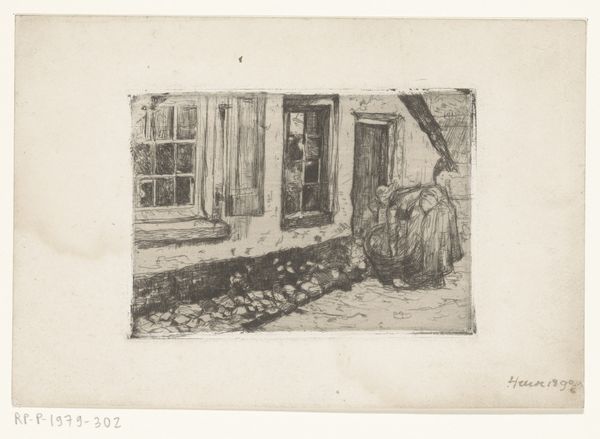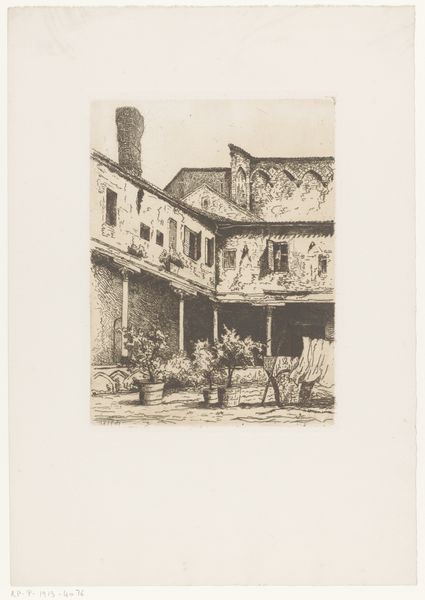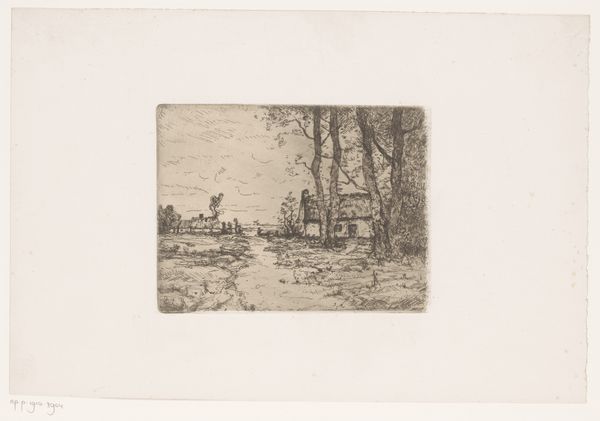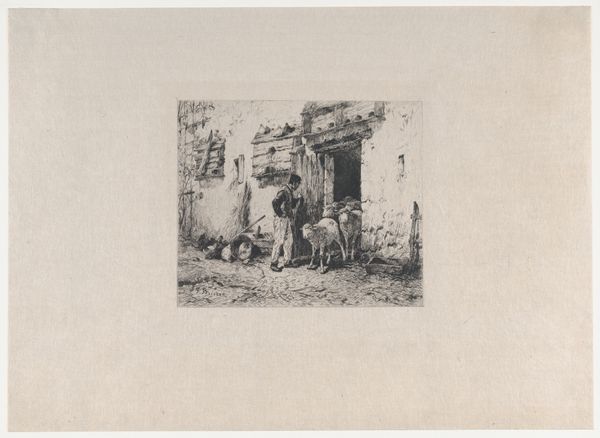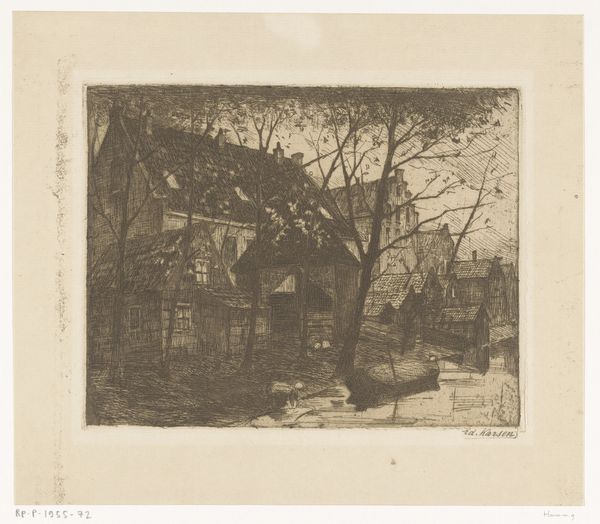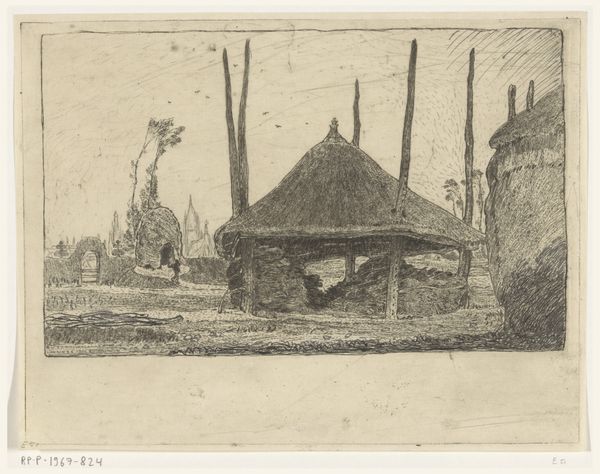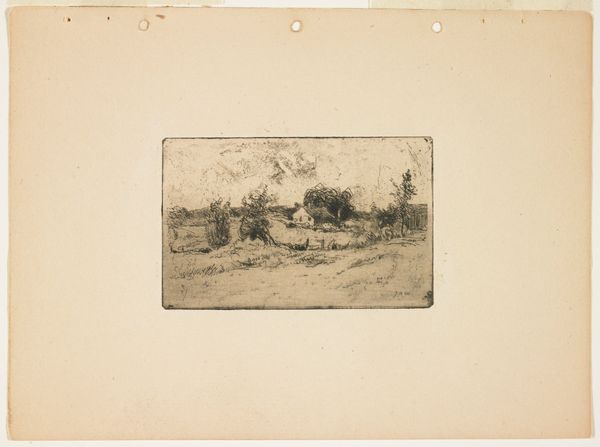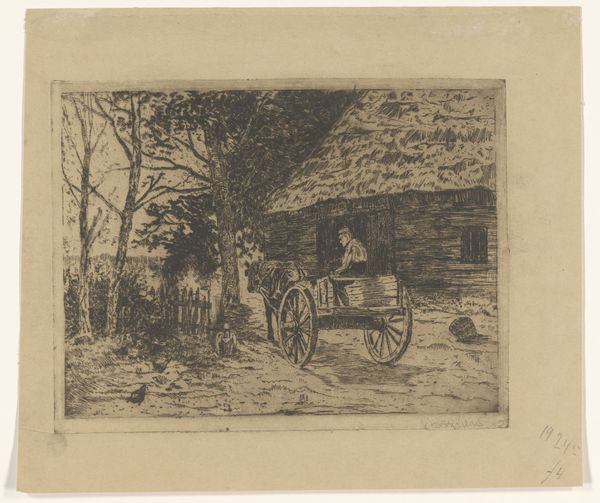
Dimensions: height 178 mm, width 234 mm
Copyright: Rijks Museum: Open Domain
Editor: So, this is "Wagen op een boerenerf in Brabant," or "Cart in a Farmyard in Brabant," an etching by Willem Witsen from 1892. It's monochrome, mostly shades of brown. There’s almost a cinematic stillness to this rural scene; the heavy cart feels like a weighty symbol. What jumps out at you? Curator: The stillness is deceptive, isn't it? I'm drawn to how Witsen captures the weight of labor and the social structures of the time, class. Consider Brabant in 1892. Industrialization was burgeoning, yet rural life persisted, often marked by exploitation and unequal power dynamics. Editor: Exploitation? I just saw it as a quiet rural landscape. Curator: Look at the size of the cart, the scale of it dominating the image compared to the human figure. The person almost fades into the background, part of the overall landscape, perhaps signifying the often-overlooked labor upon which society was built, the erasure of individual identity for those involved in manual labour. The etching technique itself mimics the texture and grit of rural life, doesn’t it? It is a form of monochrome photography. Does the starkness say anything about the living conditions or availability of materials in rural areas at the time? Editor: That's a great point; I hadn't considered that the cart almost overshadows the human presence! Curator: Also, consider the ‘landscape’ genre itself; what kind of ideological work does that do, representing an almost pastoral scene, while masking some of the social realities for people living in rural conditions? This is also realism, where, despite how things appear, the true picture is captured. What does it reveal about our expectations, as viewers, if we interpret the scene differently? Editor: It does make you think about what is NOT shown... the poverty and the inequalities of the time, which probably contrast that 'dutch golden age'. It shifts how I perceive it completely. Curator: Exactly! Art doesn’t exist in a vacuum. It's a product of its time, shaped by social, political, and economic forces. Approaching art through this lens helps us understand the stories it tells, and more importantly, the stories it often silences. This lens also highlights social commentaries that people, particularly farmers in this situation, deal with. Editor: Thanks, I have a deeper appreciation now! I learned more by interpreting an old-fashioned artwork by the society that produced it.
Comments
No comments
Be the first to comment and join the conversation on the ultimate creative platform.
